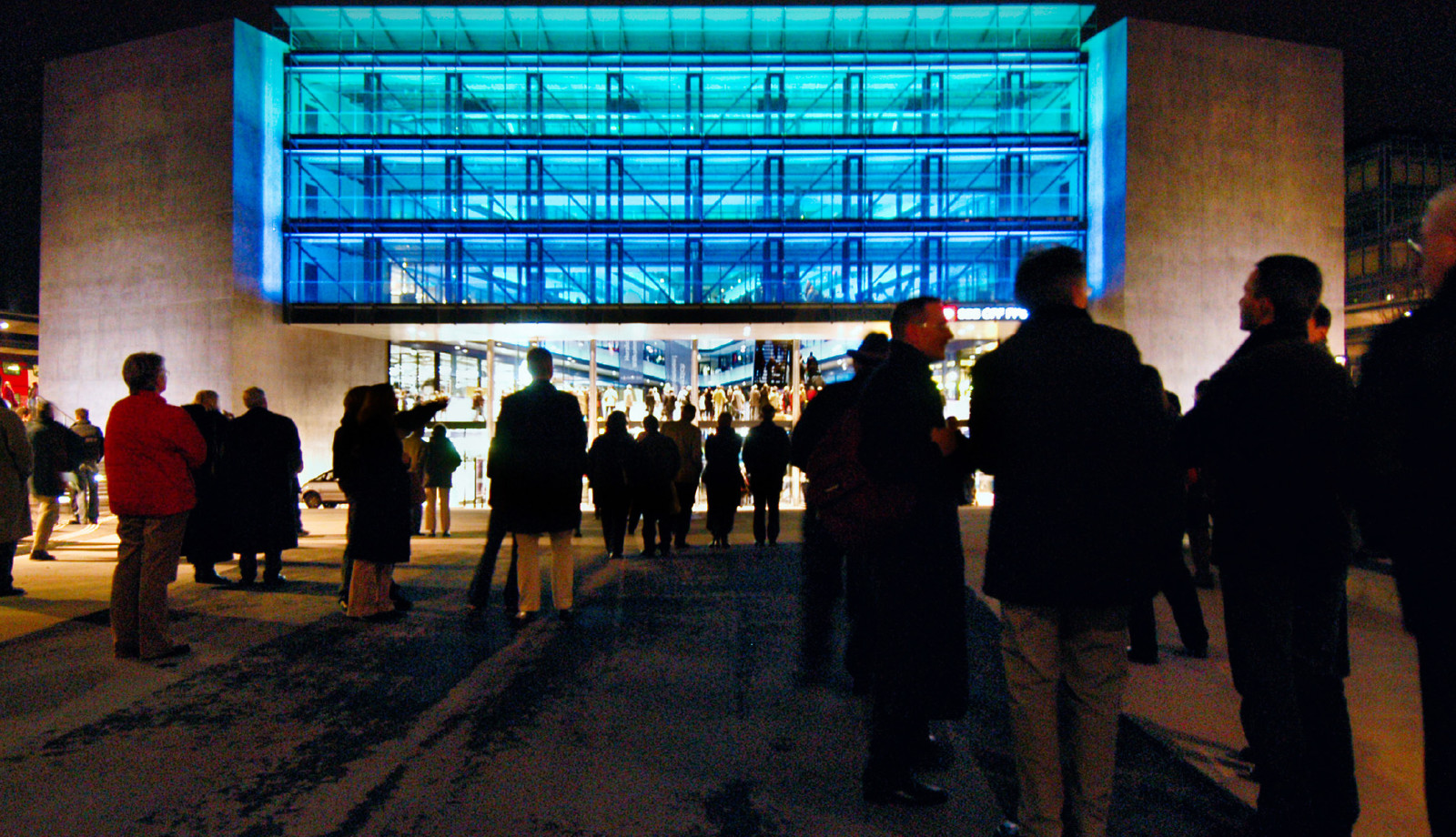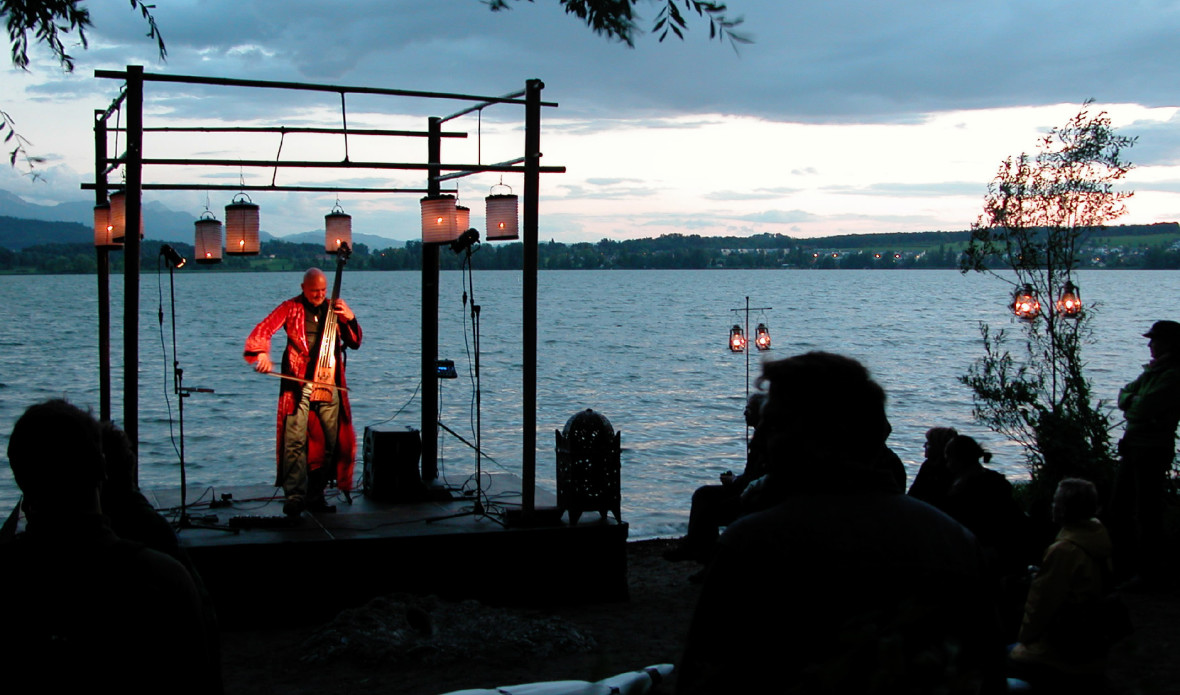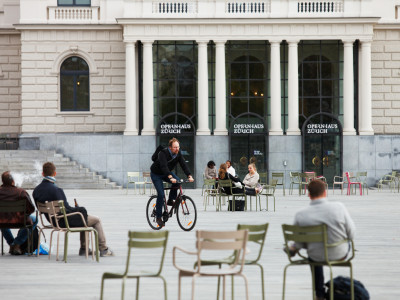
“The citizens of Zug want their city to be more vibrant”
Involvement, not ordinances: more and more cities are inviting their citizens to voice their opinions on the use of public spaces. Regula Kaiser, Head of Urban Development, discusses public engagement in Zug and what it taught her.
In 2012, the city of Zug launched a public participation process with the title “freiraum-zug” (open space Zug). How many events should take place in the city? When must quiet prevail? Which zones should be used more? These and other questions were discussed together with the citizenry. The process ended with the creation of a charter and a use concept for public urban spaces.
Ms Kaiser, what was the motivation behind the “freiraum-zug” project?
We had determined that rapid densification is putting more pressure on the need for utilisation, particularly concerning prominent locations in Zug’s park areas and especially on the lake shore. This displaced weaker groups, specifically young people who had moved into much of the space. We wanted to start a dialogue with the various user groups and bring everyone to the table. The young people were not aware that they had the chance to launch a defence against their displacement. Another goal was to demonstrate that there is a large and multifaceted supply of space in the city of Zug, the potential for which has not yet been fully exhausted, for example Postplatz, Bundesplatz, Hirschenplatz, Arenaplatz and the Metalli.
How did you plan the participation process?
We developed it together with the Lucerne School of Social Work – from practically nothing, as there were no models. Specifically, we held three large workshops, each for 120 to 140 people, along with accompanying events. The aim was to find out which utilisations the citizens of Zug want for which areas, and how these demands can be allocated in a way that’s user-friendly and location-friendly. We worked with city maps, for example, on which participants could make their interests visually known.
“The aim was to find out which utilisations the citizens of Zug want for which areas, and how these demands can be allocated in a way that’s user-friendly and location-friendly.”
How did you invite the city’s residents to these workshops, and were you able to reach all groups?
We advertised through the media, associations and word of mouth. We also distributed flyers on the streets in order to reach as many people as possible. The segments we had the most success reaching were primarily people in middle age, organised interest groups and members of associations. The youth segment was under-represented. For them, we held side events such as video workshops, a dialogue café and a children’s painting workshop.
What was the result?
What the workshops told me was this: the citizens of Zug want their city to be more vibrant. Outside of the summer months, the city’s public spaces are very quiet. A bit more life is possible, especially at the lake, whether in the form of cabarets or restaurants. But people wish there was more going on even in the quarters. However – and this is something else I discovered – even as city administrator, one can’t control everything. It’s better to allow more and plan less. Whilst the topic of open space is likely to gain in importance as density increases, there are new issues emerging such as urban gardening, structural change in retail, sharing schemes and mobile furniture.
We prepared a charter with ideas on how life in public space should be negotiated. We recorded people’s wishes for use on maps divided by areas. The city council decided on a catalogue of measures for achieving the most important goals and setting the course for change.
“Public participation processes help to create a better dialogue culture and often lead to a greater variety of solutions as well.”
Would you recommend such public participation processes for other cities? If yes, what requires special attention?
Such processes can be expensive and time-consuming, but they are worth it! You are given a direct line to the people and their issues. Public participation processes help to create a better dialogue culture and often lead to a greater variety of solutions as well. “freiraum-zug” was the right thing at the right time for our city; it got many discussions and projects going. Such processes can hardly be duplicated. They arise from the current political discussions and from a city’s need for action. What’s important is that the scope of participation is precisely defined and delineated. Participation is not a shadow parliament. The powers for implementation generally lie with the cantonal parliament, which may decide on a different tack to the one participants would have liked. Participation is never representative. The participants must always be informed on what can be achieved – and what can’t. Ultimately, however, public participation also leads to people feeling they are being taken more seriously than if they’re merely being “informed”.


